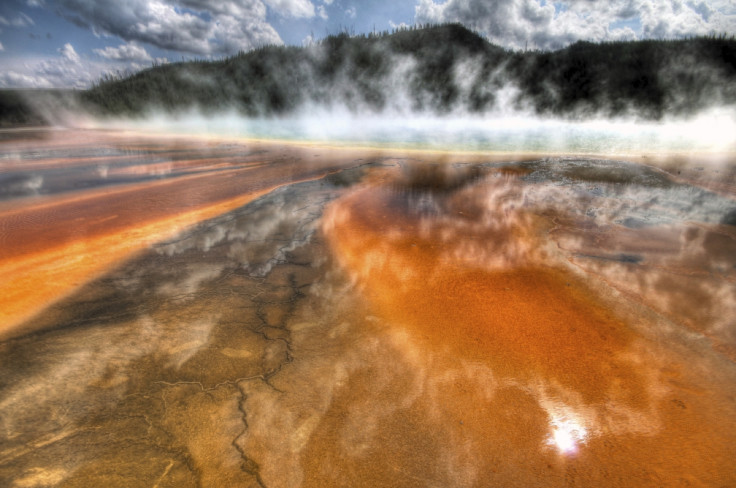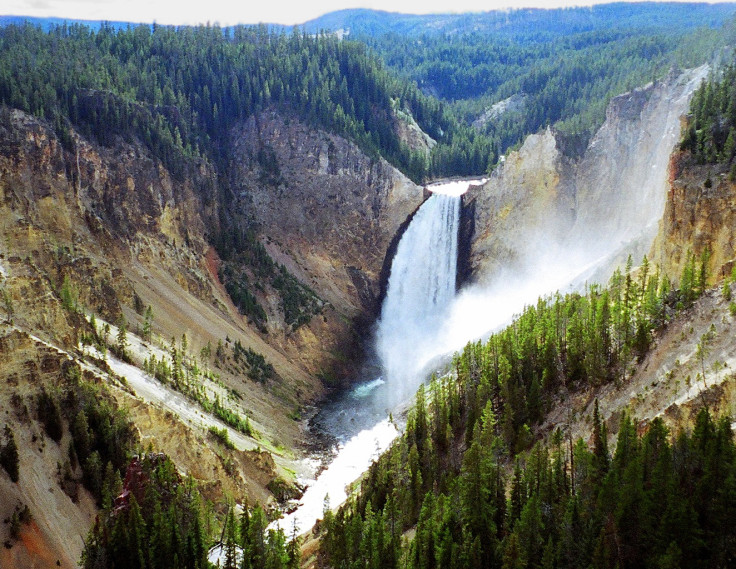Super-eruptions bigger than Yellowstone volcano discovered at Snake River Plain

Massive volcanic super-eruptions bigger than those seen at Yellowstone took place between eight and 12 million years ago around Idaho's Snake River Plain, researchers have discovered. Scientists found evidence of at least 12 giant eruptions at the Yellowstone hotspot at a time of intense magmatic activity – a discovery that could shed light on the current state of the volcanic system.
These massive eruptions are believed to have burned an explosive path from Oregon towards Yellowstone over 16 million years. The findings of the study are published in the Geological Society of America Bulletin.
The Yellowstone hotspot is a fixed heat source rising from deep underground. Over millions of years, the North American tectonic plate has moved steadily west, meaning the hotspot has appeared to move towards the north east.
Led by Tom Knott, from the University of Leicester, researchers analysed rocks, mineral, palaeomagnetic and radio isotopic data to find details of each massive eruption. While volcanic activity has long been known to have taken place across the region, it was thought these ancient eruptions were smaller and more frequent.
Knott told IBTimes UK: "Much of the previous work had simply totalled up the number of eruptions identified at localised successions with little thought that many could actually be connected as the same eruptions. Therefore we had suspicions that many could be correlated and linked together, but we had little indication just how big the eruption deposits could be until we had correlated the same rock layers between numerous wide-spaced locations."

One of the super-eruptions, which took place 8.1 million years ago, is believed to have been bigger those produced at the Yellowstone caldera. "The largest super-eruption of the entire province is the Huckleberry Ridge Tuff which erupted from present day Yellowstone 2.1 million years ago with a volume of 2,500 km3. Our newly discovered Castleford Crossing super-eruption (8.1 million years old) has a volume of 1,900 km3," Knott said, but added but the volume of the Castleford Crossing eruption is a conservative and very likely a minimum estimate.
"Moreover, Yellowstone has only produced this one colossal eruption, whereas the Castleford Crossing eruption is just one of at least five eruptions with similar volumes," he added. "We even strongly predict that when we have completed our volume calculations we will have revealed numerous eruptions that actually surpass the magnitude of those at Yellowstone.
"Therefore, future researchers (be that ourselves or others) will be able to continue to consider 'why were there some many numerous super-eruptions originating from the Yellowstone hotspot between 12 and 8 million years ago, compared to only few from its present day location'."
As well as producing a huge volume of material, the 12 ancient eruptions were also extremely hot - between 900-1,000C. In comparison, the eruption at Mount St Helens was about 350C, while those from present-day Yellowstone reached between 800 and 900C.

Knott said they did not fully understand why these eruptions were hotter, but said it could suggest Yellowstone is starting to fizzle out: "Is present Yellowstone the dwindling ember of a volcanic system that was much larger, much hotter, and much more violent during its adolescence in the Mid-Miocene (12-8 million years ago)?"
Understanding these ancient eruptions should give a better insight into how they affected Earth's climate. The Toba eruption 75,000 years ago, for example, had a profound effect on human evolution in relation to its impact on climate: "We have yet to assess what the magnitude of these effects could have been, however we hope that by placing these newly-discovered super eruptions onto the geological time scale that scientists can look back at our Earth's climate and see if any matches to any effects can be made."
Knott and his team now plan to look at the impact of the eruptions to try to find ash deposits from them around the globe. "Super-eruptions, along with large scale asteroid impacts, are among the most devastating events to affect our Earth's surface. If we are successful in uncovering the global record of these central Snake River super-eruptions we can build this into a global dataset to assess the true effects of these colossal events," he said.
© Copyright IBTimes 2025. All rights reserved.






















